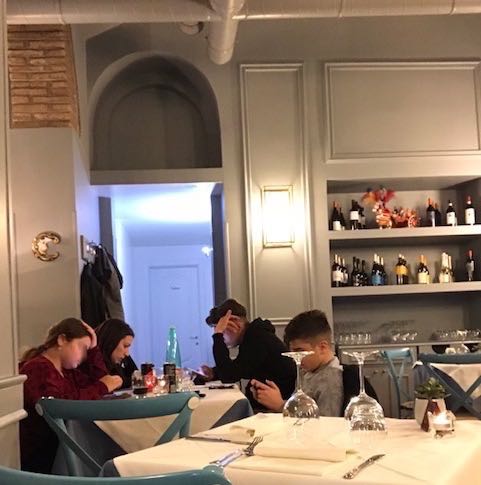Table Talk
January 29, 2018

THIS IS an Italian family eating out in a restaurant in Rome last week. It appeared to be a mother with her three adolescent sons (one of them had walked away briefly) and her daughter. In between the primi and secundi courses for this midweek meal, they all communed with their cell phones. The mother is the one in the far left, tired, her elbow on the table, hunched over her phone. The Italian matriarch is not what she once was.
In a few years, these children will be gone from home. Is their time together, time together? It’s easy to blame cell phone technology here, but there is, I think, a deeper problem and cell phones can’t be entirely blamed.
To be fair, the formless family dinner, which is the norm today (the norm, that is, when families eat together), can lead to problems, especially when family members are exhausted. It’s not surprising that people would try to escape it. Bickering or irritableness or the hogging of conversation can make family dinner an unpleasant experience, especially with teenagers.
On the other hand, to be detached from each other in this way — no, there has to be a better way.
To avoid both extremes, structure is good. Here are two possibilities. One, parents can direct conversation, perhaps giving each person a couple of minutes to describe something good that happened that day, allowing no one else to respond. Two, this may seem ridiculous to us but in monasteries, it has sometimes been the practice for one person to read aloud while the others listen silently. That way, all are sharing some inner experience together and no one is left out. It doesn’t have to be something profound or complicated, perhaps a simple, inspiring story or essay.
Life is short. Family dinner is for many obsolete altogether. The modern way of life is entirely against it. But it is an essential tradition, the most important time of day.
